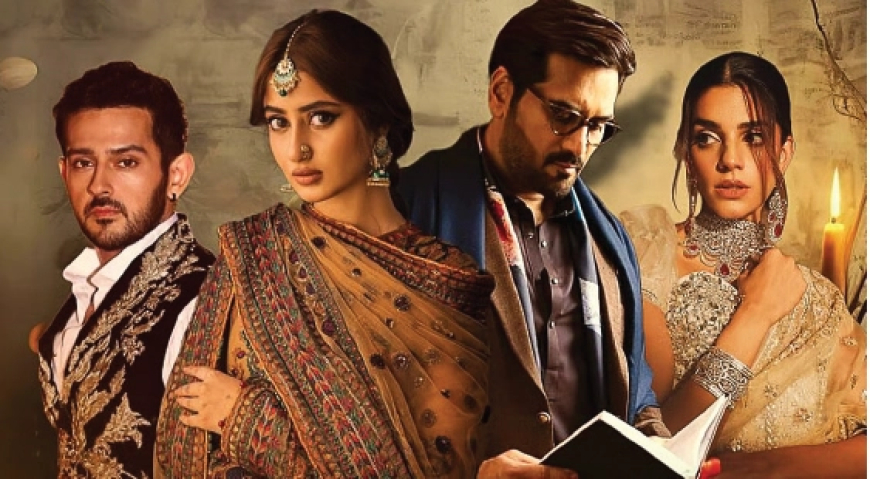Main Manto Nahi Hoon: Hype without Substance
A critical review of Main Manto Nahi Hoon, examining its failed potential, problematic themes, and the missed opportunity to deliver a meaningful narrative.

Few dramas have arrived with as much anticipation as Main Manto Nahi Hoon. With a prime-time slot, Humayun Saeed and Sajal Aly in lead roles, Sanam Saeed in support, and Khalil-ur-Rehman Qamar as the writer, expectations were high. Add a national television network backing, and one might expect a cultural milestone. Instead, the drama delivers a muddled narrative, mistaking controversy for complexity and relying on outdated tropes that Pakistani television should have evolved beyond.
Plot Overview
The story revolves around Mehmal (Sajal Aly), the daughter of a warring gangster family. Privileged yet sheltered, Mehmal struggles with ordinary social interactions while showing an unusual deference to authority figures. Her professor, Manto (Humayun Saeed), whose name borrows from the legendary South Asian writer, becomes the center of a contentious teacher-student dynamic. Circumstances, manipulations, and misguided guidance draw Mehmal into an increasingly blurred relationship with her teacher, which forms the drama’s most controversial plotline.
The Teacher-Student Dynamic
On paper, the teacher-student “love angle” raises ethical concerns. On screen, it comes across as unsettling and contrived. Mehmal is manipulated into Manto’s orbit by her phuppo and teacher Ms. Maria (Sanam Saeed), leaving her little room to form her own judgments. Manto’s passivity further complicates matters; he consistently avoids taking responsibility, attending a student’s engagement despite knowing it is inappropriate. The result is a storyline that feels manipulative rather than a genuine romantic exploration.
Handling Sensitive Themes
Certain moments, such as Mehmal joking about her professor’s personal life or discussions on body image, feel outdated and tone-deaf. While it is important for media to reflect societal realities, this drama misses opportunities to address issues like body positivity and mental health responsibly.
Underdeveloped Characters
Despite the star-studded cast, the characters are largely underwritten:
-
Mehmal lacks depth and agency.
-
Manto is passive and underwhelming.
-
Ms. Maria is underutilized.
-
Supporting characters, including Mehmal’s parents and phuppo, perform well but cannot carry the story.
Even the typically sharp dialogues of Khalil-ur-Rehman Qamar occasionally fall flat due to the lack of coherent narrative progression.
Patriarchy Masquerading as Agency
The drama presents Mehmal as a spirited female character, yet her choices are constantly influenced by those around her. Strong women in the series are not celebrated; instead, their actions reinforce patriarchal norms. This aligns with a recurring pattern in Qamar’s work, where seemingly independent women ultimately serve traditional structures.
Misuse of Manto’s Legacy
Arguably the most significant misstep is the appropriation of Saadat Hasan Manto’s name. Manto was known for radical societal critique and fearless storytelling. The drama borrows his aura but fails to capture his rebellious spirit, presenting a character who flirts with boundaries without challenging societal norms. This undermines the legacy of one of South Asia’s greatest literary figures.
Conclusion
With its high-profile cast, budget, and pre-release hype, Main Manto Nahi Hoon had the potential to redefine Pakistani television. Instead, it delivers controversy without depth, recycling tired tropes and failing to inspire or challenge its audience. Pakistani viewers in 2025 deserve dramas that reflect contemporary society, promote inclusivity, and push creative boundaries rather than relying on outdated narratives and sensationalism.
For more updates , Visit Nation bytes

 Israr Ahmed
Israr Ahmed